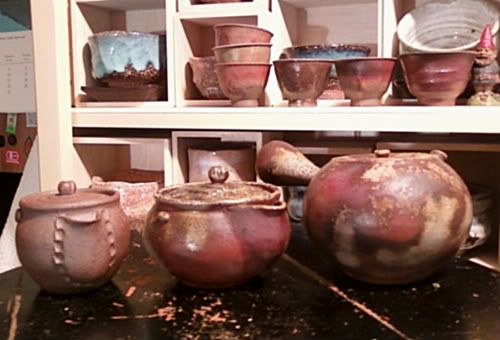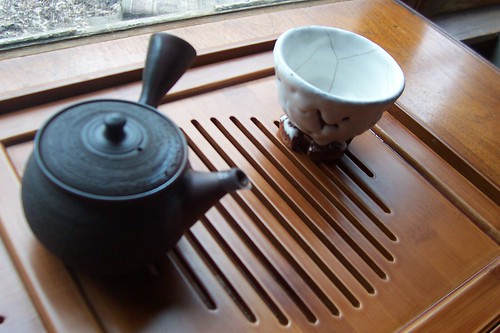Tead Off wrote:Reduction is possible in all kilns, I think.
Yes, this is true. Pretty much any fuel fired kiln can do this easily. Electric kilns are a little trickier... but it can be done there too. However creating reduction in an electric kiln takes its toll on the electrical elements. And you have to get a fuel source in there somehow.
Many potters (here in the USA) think this is not really possible with electric kilns.....but it is. In Japan some of the most gorgeous work I have seen out of some people I know there like Miura-sensei at Geidai and Kondo-sensei in Kyoto ...that you would swear was fired in a fuel burning kiln..... is fired in electric kilns with tiny wood fireboxes on them to create reduction (not heat) at the correct times.
The replacement of electrical elements every so often is just the "cost of doing business" if you want to fire reduction in an electric kiln. (There are some tricks to protect the elements a bit too.)
By the way...... my acquantience Kondo-san was telling me two years ago that in Kyoto now it is impossible to fire even new reduction kilns. His recently independent apprentice had to move out of the city when he set out to start his pottery and wanted a gas kiln. Kondo-san said their electric reduction kiln is still allowed due to the heavy family status/history in Kyoto (Kondo Uzo - Living National Treasure in porcelain). Wood kiln firing in Kyoto has been restricted ever since I have been going to Japan....years and years.... due to air pollution restrictions. Kyoto sort of sits in a valley with mountains (hills really) surrounding it and creating a great environment to trap air pollution. (Sort of like Salt Lake City in the USA.)
Tead Off wrote:Yohen, if I am correct, is something that happens to the surface during a wood firing, where the fire changes the color and adds effects. I don't think you can get Yohen from gas or electric kilns.
Youhen is not necessarily totally restricted to wood firing........ although that is the most common source of such effects. There are many types of fire change effects that are done in Japan in gas and even electric kilns. Most ware in Japan is fired in gas and electric kilns these days. The wood kiln in Japan is an expensive luxury beast. They require a decent amount of land. Land is expensive in Japan. Wood is typically VERY expensive in most parts of Japan. There is a blight that is infecting the aka matsu (Japanese red pine) in the southern part of Japan.....making that wood (the PRIME choice for firing noborigama) rather scarse and expensive. And traditional types of wood kilns produce a goodly amount of smoke...... so as population grows... the locations that wood kilns can continue to fire are getting more and more restricted.
best,
.................john
. Artist is Gyokko and it is made from red clay using the Yohen technique. You can't tell from my photo (I will master that later) but it is black with rusty red on the spout and handle fading into the surrounding black. It brewed up a heavenly batch of Hon Yama Hebizuka for me, which Hojo included as a sample. I will be reviewing that one as it is scrumptous.

